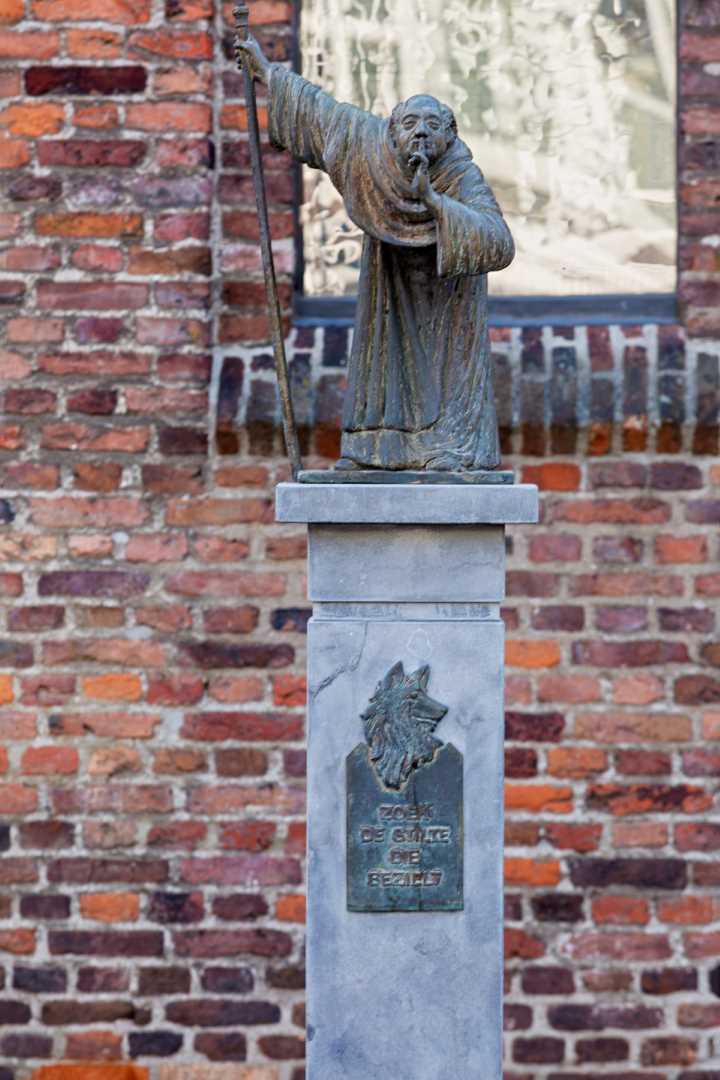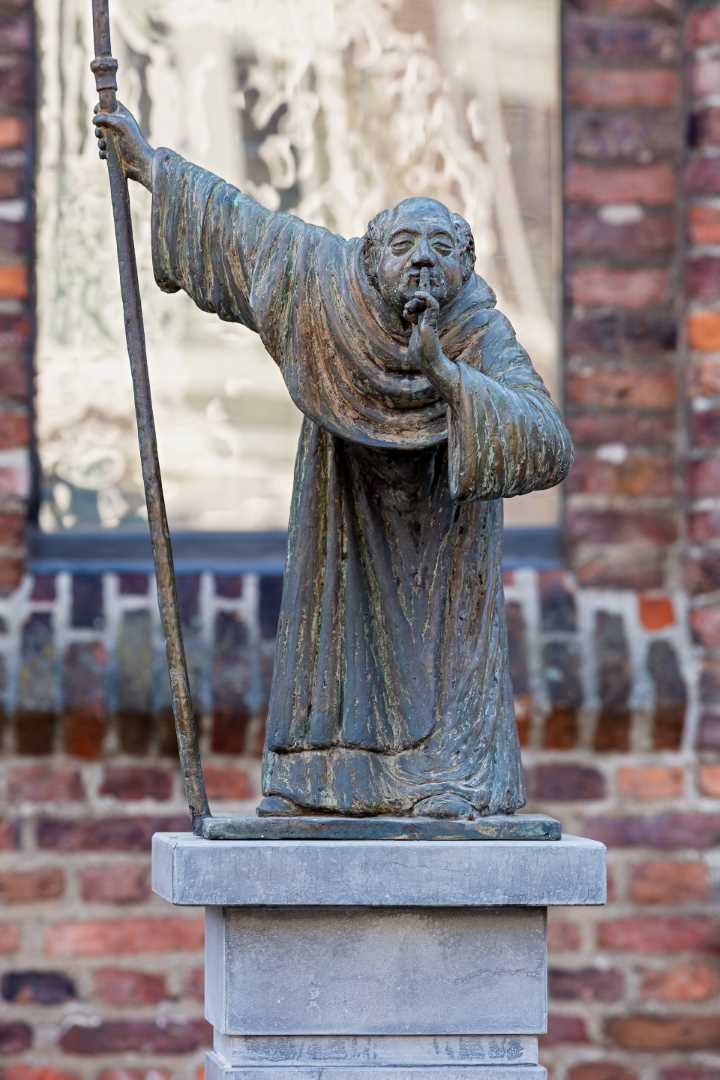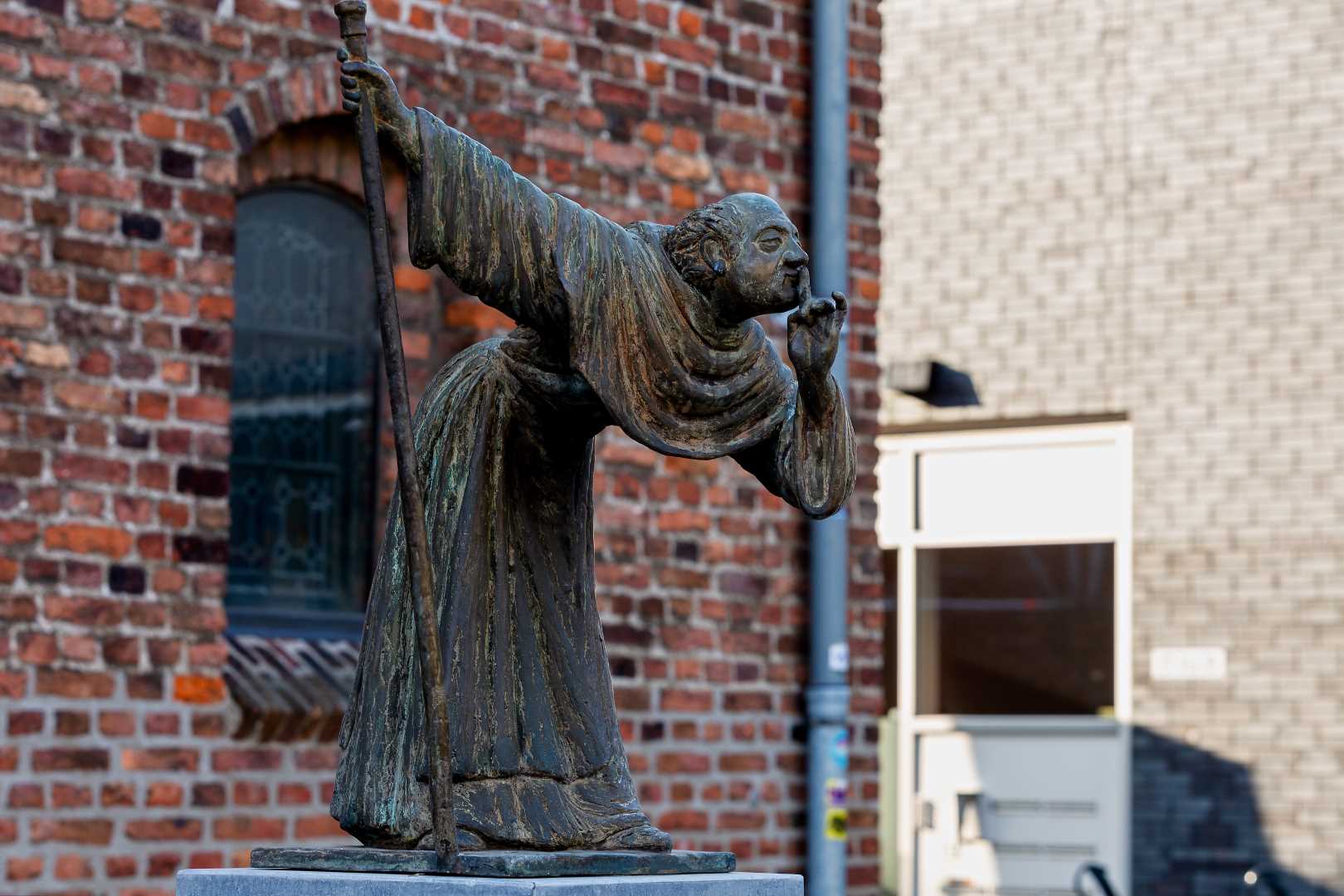‘t Paeterke
Dominicanenplein
‘t Paeterke – Ger Janssen
t Paeterke or The Father is a reference to the presence of the Dominican fathers on this spot. From 1892 on they lived in the monastery Trans-Cedron a little further down the road, on the Kleine Beekstraat. However, the monastery was destroyed in the Second World War. There was no new building to replace it. A new building was built for the Mariaweide convent next to the chapel. The present monastery building was built in 1960 by J. van Hest in the style of the Bossche School, on the site of the destroyed Mariaweide Monastery.
The statue of ‘t Paeterke stands in front of what is officially called the Mariaweide Monastery Chapel, but is also popularly known as the Father or Dominican Church.
The history of the chapel goes back to the early fifteenth century. The one nave, late Gothic church served as a monastery chapel for a long time. In the eighteenth century, it was extended with a vestibule. It retained its original function until 1798, but in that year the Beguines had to leave on the orders of the French government, which had meanwhile reigned supreme in this part of the Netherlands. It subsequently housed a pipe factory and warehouse, among other things, and during the Interbellum it functioned as a salt storage and carpentry workshop. In the Second World War it was so severely damaged that in the 1950s it needed an extensive restoration. This was done according to a plan by architect J. Kayser. During the restoration, the church was expanded to include two processional halls and confessionals, as well as a priests’ choir behind the main altar.
At the beginning of the 21st century, the Dominicans left Mariaweide – the monastery building was subsequently used for housing, the Toon Hermans House and a hospice. The chapel was given a new function as well: it is now a cultural stage with the name Domani.
The artist: Ger Janssen
The work of Venlo artist Ger Janssen is characterised by diversity. After completing his training at the StadsAcademie voor Toegepaste Kunsten in Maastricht, and a brief career in the advertising world, he chose to work for himself and let his imagination run wild.
After working as an illustrator for a long time, Janssen was offered the opportunity to design a bronze statue for the Dominican Church (now Domani) in Venlo. From then on, the creation of bronze sculptures became his main focus.
The sculptures speak for themselves; it is mankind in general that inspires Janssen in its movement and mimicry. Feelings become tangible in a pose, emotions are captured in a simple gesture.
Dominicanenplein
Dominicanenplein or Dominican Square is adjacent to the Nieuwstraat. It was created after the decision to make Nieuwstraat low-traffic at the end of the 20th century. This decision led, among other things, to the removal of the parking places, after which space was created for the construction of the square. Before the Second World War, two centuries-old monasteries, Mariaweide and Trans-Cedron, stood here, occupying a large part of the area. Nieuwstraat is one of Venlo’s medieval streets and was constructed at the end of the 14th century.




